- Home
- Brian Garfield
Kolchak's Gold Page 6
Kolchak's Gold Read online
Page 6
[And in the northwest stood Mannerheim at the Finnish border: Smirnova danced at the Petrograd Conservatoire while White Russian guns muttered within earshot. The battle lines were drawn less than twenty miles from the city.
[The area controlled by the Reds had shrunk to a circle around Moscow about seven hundred miles in diameter. It was a fraction of the nation. Estonians, Letts, Lithuanians, Ukrainians, and particularly the Poles, led by their pianist Prime Minister Paderewski, were in open revolt against Lenin’s regime. The Whites now held the lion’s share of the world’s largest nation, an immense territory with a periphery of ten thousand miles. They had conquered the Don, the Kuban, the outer provinces at all compass points; Kolchak controlled all of Siberia except for the Japanese areas and Kolchak’s forces were as far along the road to Moscow as Perm. The slogan of the day was “Na Moskva!”—“To Moscow!”
[The Bolshevik Revolution was at the edge of collapse. It hung by its claws, bottled up in the center of Russia, and Lenin knew the Revolution would be destroyed irrevocably unless the Reds could reconquer a good portion of the nation by autumn.]
Somehow the Revolution tottered into February, then March, then April without falling. That it survived its own blunders and atrocities is far more remarkable than its having survived the attacks of its enemies. Russian industry suffered particularly under the heel of the new soviets. The workers had assumed power but lacked the managerial ability to go with it. They voted themselves shorter hours and 200 percent raises in pay. In the new “communist workers’ paradises” the workers’ soviets made all managerial decisions and this meant that a worker, regardless of his offense, could not be dismissed or degraded, nor a new man hired or promoted, without the approval of the workers’ council. Inevitably the soviets upheld the workers against the administrations. And every time a vote was required, the entire work force of the factory was called out to an assembly, which meant shutting down the plant. Inevitably, the productivity of Russian industry under workers’ control dropped to a pathetic fraction of its former output. Yet somehow the new Red nation stumbled on.
Rumor and appearance were as important as reality to the minds of the people. Slogans were daubed on every available wall in Red-controlled areas. In White areas there were enthusiastic war maps in the shop windows, and photographs of the Czar. Incited by rumor more than dedication, whole platoons—even companies—went over to the opposing side and within hours would find themselves facing their former comrades on the battlefield. Rapidly the Civil War tore families apart. No one trusted anyone; chaos replaced order in vast areas of the countryside. Everyone was forced to pick a side—or be shot for treason.
[Along the endless track of the Trans-Siberian these factors were more disheartening than anywhere else.*]
“The Admiral’s government assigned each village a quota of conscripts or volunteers to serve in his army. If the quota was met voluntarily, eventually the Reds would arrive in the village and when they learned that the village’s men were in the White armies the Reds would raze the village to the ground and massacre the inhabitants. If the quota was not met, on the other hand, White generals would send our Cossacks out on area sweeps to punish those villages which had failed to meet the army’s levy, and the Cossacks would slaughter the entire village.
“These conscription squads and punitive expeditions were far more responsible than the Reds for the rise of partisan bands. Siberia came to be filled with bands of Socialist revolutionaries, monarchists, partisans and ordinary bandits. The Reds were willing to try recruiting them; the White Russians took them all to be Bolsheviks. It was one small difference, but it hardly meant anything.
“You saw these vicious recruiting practices done by both sides equally. The issues of the war were of little importance to most of us, particularly those outside the cities. The Bolshevik insurrection had been almost exclusively urban and the Civil War was always a war between two minorities. Neither side enjoyed any support except what it could command by extortion, threat of force, or benefit of hate and reaction (that is, if the Reds wiped out your village you would probably join the Whites, and vice versa).”
When Kolchak began to look as if he might win after all, many of the Siberian Atamans made belated overtures to him. The warlords wanted to be on the winning side because in that place and at that time it was probable that being on the losing side would lead to a firing squad. (British pressure on Japan to modulate the Atamans’ brigandage also had an effect.) Nevertheless no one—Red or White—trusted the warlords; and the Czech Legionnaires kept their posts along the Trans-Siberian. Kolchak’s principle source of supply was the British, who during the campaign delivered to him the contents of seventy-nine shiploads of war matériel from Vladivostok and the northern ports; keeping the railway open was vital.
By April 1919 the Whites had everything in their favor and the Allies happily felt that it was only a matter of weeks, a few months at most, before the Red menace was annihilated permanently. The membrane of Bolshevik control was so fragile that it was hard to comprehend why it wasn’t already ruptured.
Victory was in sight for Aleksandr Kolchak. No one could credit a reversal at this point; the Whites were just too strong.
No one could credit it. But it happened.
7.
THE WHITE RUSSIAN DEBACLE
In April 1919 Kolchak’s lines, spread too thin and supported poorly by supply lines that were too long, staggered to a halt in the Urals.
Now the war went into a state of deadlock which was to the Reds’ advantage. The Whites were scattered across two vast continents without adequate communication and their only means of achieving a juncture of forces was to destroy the Bolshevik center. Until that happened the Whites could not coordinate their efforts and it left the Reds free to deal with each White force in turn—a tactic which Trotsky made splendid use of, rushing from front to front in the armored train that was his headquarters.
“For more than a month I can remember fighting there in that awful frozen muck. We were toe-to-toe in the mountains, neither side giving ground, each attack foundering on the insensate resistance of the enemy’s defenses. Our troops would march wearily to the front, herded by Cossack warders who ran swords through those who moved too reluctantly toward the battle. There were many who froze, or went out of the lines with frostbite and trenchfoot.
“There was no real net change up there until the fourteenth of May. Trotsky’s counterattack. It was sudden and ferocious. We were thrown into complete panic.
“By the middle of June we had lost every foot of ground we’d taken during the past six months.”
[At the same time Wrangel fell back in the south, Denikin couldn’t reinforce him sufficiently to prevent the retreat, and the Kuban fell to the Reds.]
“When the Reds captured our officers they would nail their epaulets to their shoulders with six-centimeter spikes. It was an awful retreat. The Admiral’s slogan, ‘To Moscow!,’ disappeared from the posters and marquees, and I suppose that part of the world which had watched all this began to realize that those posters would never be displayed again.”
[July 1919:] The Reds infiltrated the small high passes of the Urals and swung around behind the Whites to take them from the rear. A sudden thaw had turned the frozen canyons into quagmires but the Red drive continued, and the haphazard White defense was as fatuous in execution as it was in design.
At this point the British ceased their deliveries of aid to Kolchak. They gave him up as a lost cause—which he was, of course, as soon as they gave up supporting him.
Three rivers crossed the paths of the retreating Whites between the mountain battlefields and Kolchak’s capital at Omsk: the Tobol, the Ishim and the Irtysh. Within the next several weeks the White armies would make a stand at each of them.
In military terms the falling back of Kolchak’s regiments could be called a retreat only with some serious abuse of that word. Desertions, disease and death by combat had squandered his front-line forces
; Kolchak’s generals presided over a flimsy holding action with an army whose strength had been reduced to fifty thousand men and the only accurate term to describe their brief defense of the Tobol and their panic-stricken rush to get across it is “rout.”
Everything had splintered. Kolchak, Supreme Ruler of All the Russias, was the leader of a “government” that was a mere cohesion of weakness and exhaustion and terror; no longer did it have the slightest hope of survival.
“The officers tried to encourage recruiting by publicizing Red atrocities on shop posters, but it only scared people off. You saw money lose value by the hour—goods were scarce and there was a rush to buy things—portable valuables. People moved through the dark alleys looking for black-market contacts. You saw the deserters crowd past with their sullen faces and muffled starving people huddling in the doorways.
“Finally the Admiral gave orders to retrench the rear guard—many of them unwilling or unfit to fight—in defensive positions along the Ishim River, some one hundred miles west of Omsk. My brother and I went out with them. Somehow we held, we fought back the Third and Fifth Red armies.
“In the meantime we understood that the Admiral had pumped a little confidence into his people and they had ‘recruited’ enough replacements to start planning a counterattack, intended to drive the Bolsheviks right back into the mountains.
“But before that, we had a respite. There was no overt agreement that I ever heard of, but both sides suspended the fighting for the harvest season. Russia would starve without her crops. The soldiers went home to reap the harvest, and we held the lines with token forces.
“We lay in the trenches for nearly a month above the Ishim, waiting for them, and waiting for the Cossacks to herd our own armies back to us.”
8.
THE TRANS-SIBERIAN RAILWAY AND THE ATAMANS
By mid-1919 the Siberian railway towns had become training camps for Kolchak’s armies. Recruits and conscripts were assembled in them; the market squares were used for drilling and training, the storehouses for billeting them and equipping them with uniforms and arms. As soon as they had received a minimum of training and equipment these troops were thrown right into the lines in the Urals. In the meantime the Czech Legionnaires and a handful of American soldiers provided sentry cadres for the protection of the towns and the railroad itself, the prime umbilical: the only source of supply, and the only escape to the East.
Past the Urals the track extends four thousand miles east across the steppes to Vladivostok. In many places the rails dwindle away in both directions in a perfectly straight line as far as a man can see. For many long stretches there is but a single line of tracks; opposing traffic must pull off on sidings and await the passage of a priority train. Part of the line—mostly in the west, from Irkutsk through Omsk—had been double-tracked in substantial sections but was still insufficient for the traffic engendered by modern warfare and the support it required.
The Trans-Siberian had a poor roadbed; the ballast tended to spread and sag, and the tracks with it. Workmen had to be constantly at work with spiking hammers to tighten loose rails against the floating ties. The spring thaw almost always meant the line had to be closed down for more than a month for repairs.
Stopping the transport of an entire continent was merely a matter of blowing up a few yards of track or putting a torch to one of the thousands of small wooden bridges that dotted the line. Guarding the track against such depredations by partisans and bandits was the job of the Czech Legion; repairing the tracks was the job of labor battalions of conscripts—old men, women, adolescents too small or too young to bear rifles. These unfortunates were herded at gunpoint along the length of the Trans-Siberian to work until they dropped, keeping the roadbed in fragile repair.
The long Siberian winters were hell for railroad men. Sometimes the big 2-8-2 snowplow locomotives were not sufficient to clear the track of blizzard falls of drifted snow. Locked switches had to be thawed with pitch fires and torches. To get started from a standing stop each engine was equipped with a sandbox that could be opened to scatter sand under the driving wheels. At all times the engine fireboxes had to be kept alight and the boilers had to be kept in water; if the fire went out the pipes would burst from freezing and if the water ran out the mechanism would melt.
That the railway kept operating as long as it did was nearly miraculous. In the end, inevitably, it was destined to collapse.
“It was a war that divorced men from the restraints of decency. Massacres, tortures, rapes and atrocities were the rule and it soon became tiresome to object to these things on moral grounds because that would be like objecting to the force of gravity. They were simply the conditions of life, and life was the cheapest thing in Russia.
“Nevertheless the depravity of the Siberian Atamans stood out. These Atamans were Tatar Khans with little private armies of rural Cossacks. They were independent bandits, like the Mexican road agents of fifty years ago, but the war in Siberia made great opportunities for them and they became very powerful in their little fiefdoms. In a way they were the inbred dregs of the descendants of the Mongol hordes, the last of the petty heirs to the empire of Genghis Khan. They had been allowed to run wild in Siberia for centuries, beyond the reach of civilization.
“I remember one of them. Ataman [Grigory M.] Semenev [warlord of the Trans-Baikal Cossacks]. He operated west of Lake Baikal, mainly as a bandit but at least he professed to be an anti-Bolshevik bandit and therefore he received support from both the British and the Japanese, who apparently felt he could be useful in helping them get control of Manchuria and eastern Siberia. The Japanese were terribly ambitious out there.
“These Atamans and their Cossacks would loot towns and trains. That was their occupation, looting. They found ready markets for their spoils in places like Harbin and Chita.
“Early on, when the Admiral signed an order that was supposed to force the Atamans off the line, the Japanese informed him very coolly that the warlords were under Imperial Japanese protection. The Allies tried to change the Japanese minds, but that had no effect—it was only the Czech Legionnaires who kept the Atamans from seizing complete control over the entire eastern two thousand miles of the railway.”
It was the broneviki that gave the warlords their awful strength. The broneviki—armored trains—were not a Siberian invention but the Atamans had carried their development as machines of destruction to a new extreme. Even the massive locomotives of these menacing juggernauts were encased in 3-centimeter armor plate. The barrack and stable cars for the Cossacks, machine-gun cars with slitted traverse ports, turreted swivel-gun platform cars and armored flatcars for the chain-drive lorries and command cars and motorcycles were armored with incredible thicknesses of steel.
The broneviki could be stopped by derailment and they couldn’t travel faster than about fifteen miles per hour because the roadbeds were uncertain and they were excessively heavy trains. Nevertheless they were the scourge of Asia. When the rumor of an armored train rumbled into a railway town the citizenry would gather up its portables and leave instantly. Those who remained were exposed to the sight of the grinding black behemoth scraping to a ponderous halt with a hissing sigh of brake shoes; gunports slamming open; rifles thrusting out through armored slits; artillery swiveling in its turrets; machine guns running their muzzles out their slits and traversing the town with wicked deliberation; stable-car ramps slamming down and Cossack cavalry thundering forward, sabers high.
Service aboard the broneviki was not unlike penal servitude and not many volunteered for it. Except for the Cossacks most of the troops were impressed forcibly by the warlords and for the least offense were whipped to death. Only the Cossacks served by choice.
“Ideology meant nothing to the Siberian Cossacks. Fighting was their way of life and its object was the opportunity for looting.
“You saw them in their karakul hats, festooned with sabers and ancient Krenk rifles, and they were terrifying to look at. But unlike their western Coss
ack counterparts in Russia, and the Ukraine, they were nearly useless in modern combat since one or two properly positioned machine guns could cut them to ribbons—they had no tactics to counter that, they were very primitive. The water-cooled machine guns of the Czech Legion held them at bay. Nothing else did—certainly no moral scruple. If any human tribe of our century can be said to be utterly without redemptive qualities—other than horsemanship and physical courage—it is the Siberian Cossacks. Those stanitsa villages where they were raised on the steppes were breeding grounds for every conceivable depravity.
“If they had been too long without women—a couple of days or more—they would lasso adolescent boys and bring them along to camp at the neck end of ropes tied to their wooden saddles. They would subject them to homosexual gang-rapes and then slaughter them with sabers and hack off the victims’ genitals and leave them pendant in their mouths. If the Cossacks had been too long without action (a day or more) they would get bored and would practice their long-range marksmanship on whatever moved within eyesight, whether it be wolf, woman or infant.”
On August 19, 1919, Ataman Semenev’s Cossacks captured a train in the Trans-Baikal. When they learned it was a White Russian prisoner-of-war train the Cossacks were incensed: no booty. The fifty carloads of Red prisoners were slaughtered to the last man by Cossack sabers. Three thousand dead.
Ataman Rozanov in the Far East—a Kolchak supporter—rounded up whole village populations as hostages and whenever one of his own men was killed he would kill ten of the hostages. Later in history this extortionate technique would be put to use by the Nazis but it is useful to note that Hitler did not invent it.
The Allied Expeditionary Forces which had landed in Vladivostok to support White Russia’s efforts were exposed to these Cossack bestialities at closer range than were most Russians, let alone other outlanders. It was in large part the revulsion experienced by men like General Knox and the American General Graves which, as much as any battlefield reverses, encouraged the Allies to pull out of Russia. They no longer wanted any part of the Russians—White or Red. To their Western minds it was no longer possible to extend assistance to any nation regardless of leadership so long as it fostered (or even permitted) the existence of beings as verminous as Grigory Semenev and his Cossacks.

 Marshal Jeremy Six #3
Marshal Jeremy Six #3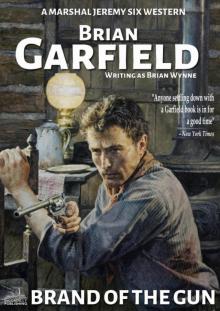 Marshal Jeremy Six #6
Marshal Jeremy Six #6 Marshal Jeremy Six #5
Marshal Jeremy Six #5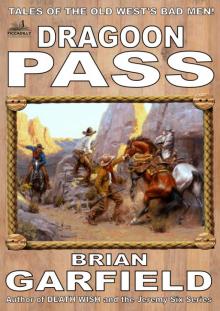 The Outlaws 2
The Outlaws 2 Marshal Jeremy Six #7
Marshal Jeremy Six #7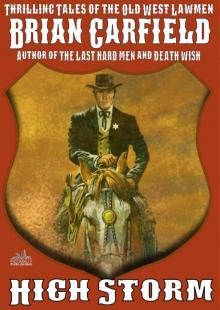 The Lawbringers 4
The Lawbringers 4 Marshal Jeremy Six #4 the Proud Riders
Marshal Jeremy Six #4 the Proud Riders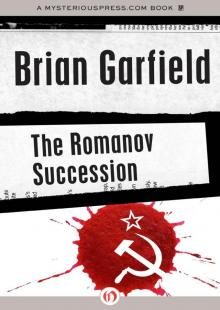 The Romanov succession
The Romanov succession Marshal Jeremy Six #8
Marshal Jeremy Six #8 Sliphammer
Sliphammer Line of Succession
Line of Succession Deep Cover
Deep Cover Kolchak's Gold
Kolchak's Gold Death Wish
Death Wish Suspended Sentences
Suspended Sentences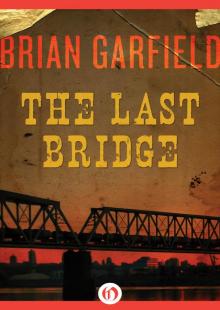 The Last Bridge
The Last Bridge Relentless
Relentless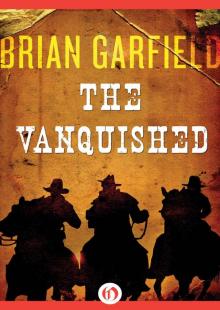 The Vanquished
The Vanquished The Last Hard Men
The Last Hard Men Hit and The Marksman
Hit and The Marksman Villiers Touch
Villiers Touch Target Manhattan
Target Manhattan Marchand Woman
Marchand Woman What of Terry Conniston?
What of Terry Conniston? Threepersons Hunt
Threepersons Hunt Checkpoint Charlie
Checkpoint Charlie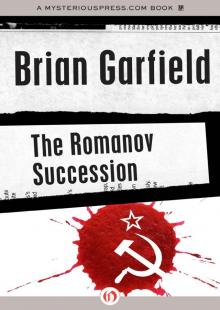 Romanov Succession
Romanov Succession Necessity
Necessity Death Sentence
Death Sentence Fear in a Handful of Dust
Fear in a Handful of Dust Hopscotch
Hopscotch